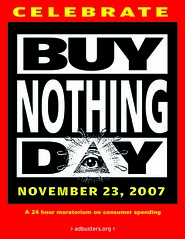The British refer to them as "sceptics" rather than "skeptics", but regardless of their geographic location their sceptical arguments tend to fall into predictible groups, as noted in
this BBC News special report, which is prefaced as follows:
What are some of the reasons why "climate sceptics" dispute the evidence that human activities such as industrial emissions of greenhouse gases and deforestation are bringing potentially dangerous changes to the Earth's climate?
As the Intergovernmental Panel on Climate Change (IPCC) finalises its landmark report for 2007, we look at 10 of the arguments most often made against the IPCC consensus, and some of the counter-arguments made by scientists who agree with the IPCC.
In an
accompanying piece, BBC environmental correspondent Richard Black queried the 61 "accredited experts in climate and related scientific disciplines" (as they described themselves) who wrote an open letter to Canada's newly elected prime minister, Stephen Harper. The letter essentially implored that the government revisit the current climate change plans and rethink the approach.
Of the respondents, Black summarized their positions in these terms:
So to the results. Ten out of the 14 agreed that the Earth's surface temperature had risen over the last 50 years; three said it had not, with one equivocal response.
Nine agreed that atmospheric levels of greenhouse gases such as carbon dioxide, methane and nitrous oxide had risen over the last century, with two saying decidedly that levels had not risen. Eight said that human factors were principally driving the rise.
Twelve of the fourteen agreed that in principle, rising greenhouse gas concentrations should increase temperatures.
But eight cited the Sun as the principal factor behind the observed temperature increase.
And nine said the "urban heat island" effect - where progressive urbanisation around weather stations has increased the amount of heat generated locally - had affected the record of historical temperatures.
Eleven believed rising greenhouse gas concentrations would not result in "dangerous" climate change, and 12 said it would be unwise for the global community to restrain production of carbon dioxide and the other relevant gases, with several suggesting that such restraint would bring economic disruption.
Black goes further into the nature of the responses and if you're interested in the varying rationales that climate skeptics employ, this piece is engaging and revealing.
One of the contributors to the
Real Climate site (a group of scientists who blog about climate change issues--their tagline: Climate science from climate scientists), NASA climate modeler Gavin A. Schmidt, worked with Black to consolidate the contrarian arguments presented in the article, which he found
weak and disappointing on the whole:
Alongside each of these talking points, is a counter-point from the mainstream (full disclosure, I helped Richard edit some of those). In truth though, I was a little disappointed at how lame their 'top 10′ arguments were. In order, they are: false, a cherry pick, a red herring, false, false, false, a red herring, a red herring, false and a strawman. They even used the 'grapes grew in medieval England' meme that you'd think they'd have abandoned already given that more grapes are grown in England now than ever before (see here). Another commonplace untruth is the claim that water vapour is '98% of the greenhouse effect' - it's just not.
So why do the contrarians still use arguments that are blatantly false? I think the most obvious reason is that they are simply not interested (as a whole) in providing a coherent counter story. If science has one overriding principle, it is that you should adjust your thinking in the light of new information and discoveries - the contrarians continued use of old, tired and discredited arguments demonstrates their divorce from the scientific process more clearly than any densely argued rebuttal.
If the few climate skeptics that remain hope to have any influence in governmental or societal changes in the decades ahead, they're going to have to marshall some better arguments--arguments that can't be so easily refuted.
